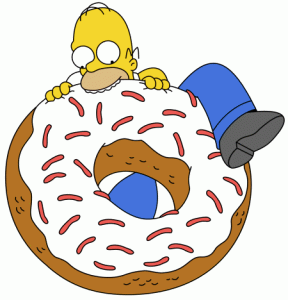I'm struck by how often I'm asked about a product's ability to change people's behavior. It's not the fact that I'm asked the question, but it's usually that an expectation is often embedded within the question that it is the product itself that causes the change.
This couldn't be farther from the truth. Products alone (and services for that matter) do not change people's behavior. The reason people point to the product or service as the reason for behavior change is because the product or service is the tangible expression – I also call it the vehicle – through which people satisfy their motivations.
I'm currently doing a lot of work identifying disruptive opportunities within the healthcare system to enable better management of chronic diseases. It's commonly understood that population health would vastly improve if people took better care of themselves – exercise more, eat more healthy foods, etc. And to that end we see so many health and fitness tracking devices entering the market. With few exceptions, people like to point to the device and/or service they are using as the reason people successfully change their behavior – and the reason they fail to maintain new behaviors.
However, it's seldom the case that the product or service is the specific reason and here's why. People are driven to satisfy their motivations, and these fundamental motivations do not change. Behaviors change when there is a better way to satisfy their motivations than existed before. If a new product or service helps to satisfy a person's motivations, then they will use it. If it doesn't, it may be used for a while – to satisfy their desire for novelty for example – only to be discontinued when the novelty wears off.
People are seldom motivated to eat better or exercise more just because they know they should. Most health and wellness products track tangible progress, but they don't give feedback on their deeper motivations. These deep motivations are usually psychologically based, and most people are not even aware they exist, let alone that their behavior is being driven by them.
Most people understand this concept when it comes to advertising, and creating messages with deep emotional connections. However, this same level of understanding is seldom translated into a product or service's design and interaction mechanisms. To do this, we must be able to assess whether the use of a product or service engenders feelings consistent with the motivations that drive a consumer's decisions for why they choose their products or services. And before we can do that, we need to derive what those motivations are in the first place. That's two levels of translation at least.
And as with anything, where it all goes wrong is in the translation. Think about this as we are consistently bombarded with new devices that will help us to meet our health and fitness goals, and how those goals are translated to what it is that you are truly looking for.
Image credit Simpsons Crazy

